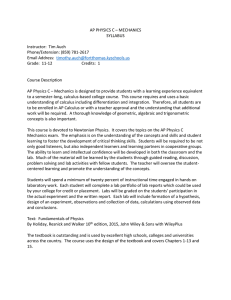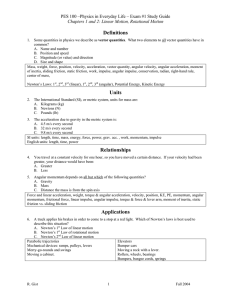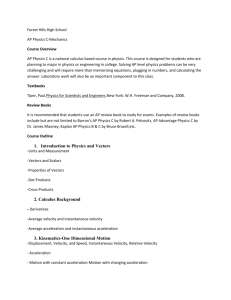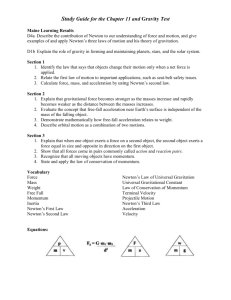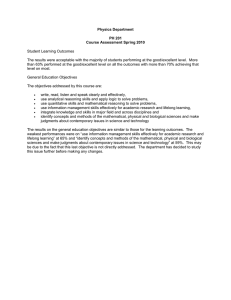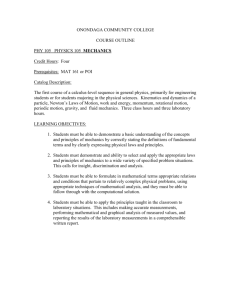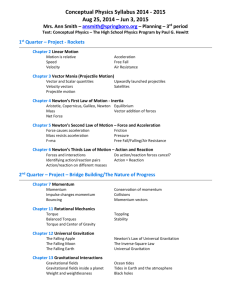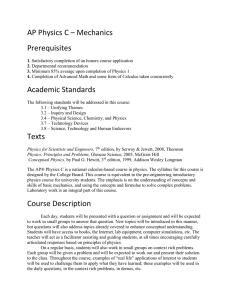AP Physics Expectations & Syllabus
advertisement
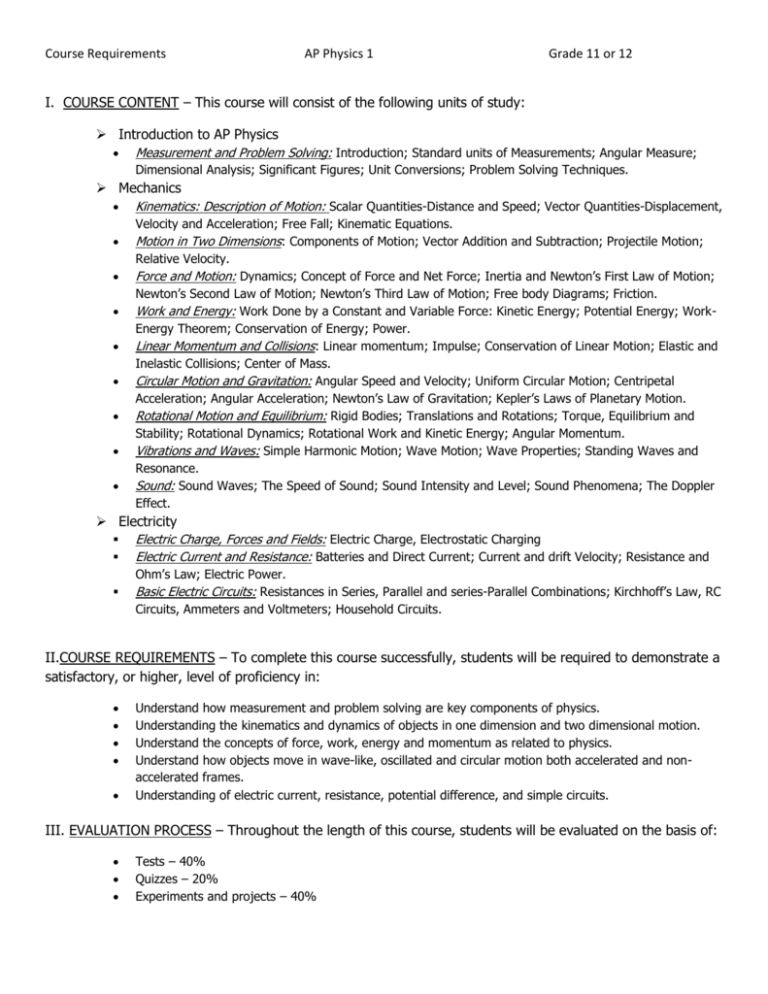
Course Requirements AP Physics 1 Grade 11 or 12 I. COURSE CONTENT – This course will consist of the following units of study: Introduction to AP Physics Measurement and Problem Solving: Introduction; Standard units of Measurements; Angular Measure; Dimensional Analysis; Significant Figures; Unit Conversions; Problem Solving Techniques. Mechanics Kinematics: Description of Motion: Scalar Quantities-Distance and Speed; Vector Quantities-Displacement, Velocity and Acceleration; Free Fall; Kinematic Equations. Motion in Two Dimensions: Components of Motion; Vector Addition and Subtraction; Projectile Motion; Relative Velocity. Force and Motion: Dynamics; Concept of Force and Net Force; Inertia and Newton’s First Law of Motion; Newton’s Second Law of Motion; Newton’s Third Law of Motion; Free body Diagrams; Friction. Work and Energy: Work Done by a Constant and Variable Force: Kinetic Energy; Potential Energy; WorkEnergy Theorem; Conservation of Energy; Power. Linear Momentum and Collisions: Linear momentum; Impulse; Conservation of Linear Motion; Elastic and Inelastic Collisions; Center of Mass. Circular Motion and Gravitation: Angular Speed and Velocity; Uniform Circular Motion; Centripetal Acceleration; Angular Acceleration; Newton’s Law of Gravitation; Kepler’s Laws of Planetary Motion. Rotational Motion and Equilibrium: Rigid Bodies; Translations and Rotations; Torque, Equilibrium and Stability; Rotational Dynamics; Rotational Work and Kinetic Energy; Angular Momentum. Vibrations and Waves: Simple Harmonic Motion; Wave Motion; Wave Properties; Standing Waves and Resonance. Sound: Sound Waves; The Speed of Sound; Sound Intensity and Level; Sound Phenomena; The Doppler Effect. Electricity Electric Charge, Forces and Fields: Electric Charge, Electrostatic Charging Electric Current and Resistance: Batteries and Direct Current; Current and drift Velocity; Resistance and Ohm’s Law; Electric Power. Basic Electric Circuits: Resistances in Series, Parallel and series-Parallel Combinations; Kirchhoff’s Law, RC Circuits, Ammeters and Voltmeters; Household Circuits. II.COURSE REQUIREMENTS – To complete this course successfully, students will be required to demonstrate a satisfactory, or higher, level of proficiency in: Understand how measurement and problem solving are key components of physics. Understanding the kinematics and dynamics of objects in one dimension and two dimensional motion. Understand the concepts of force, work, energy and momentum as related to physics. Understand how objects move in wave-like, oscillated and circular motion both accelerated and nonaccelerated frames. Understanding of electric current, resistance, potential difference, and simple circuits. III. EVALUATION PROCESS – Throughout the length of this course, students will be evaluated on the basis of: Tests – 40% Quizzes – 20% Experiments and projects – 40%




